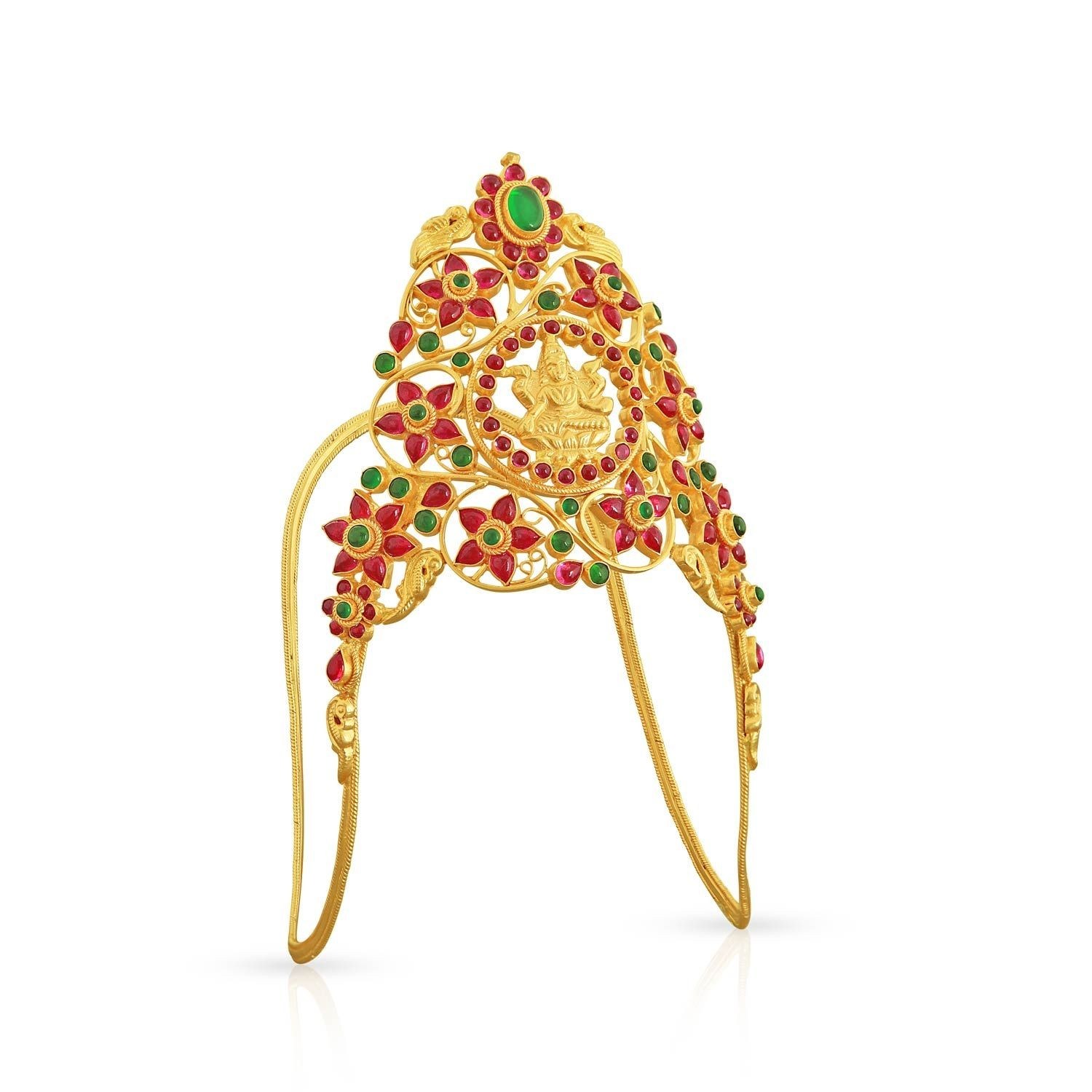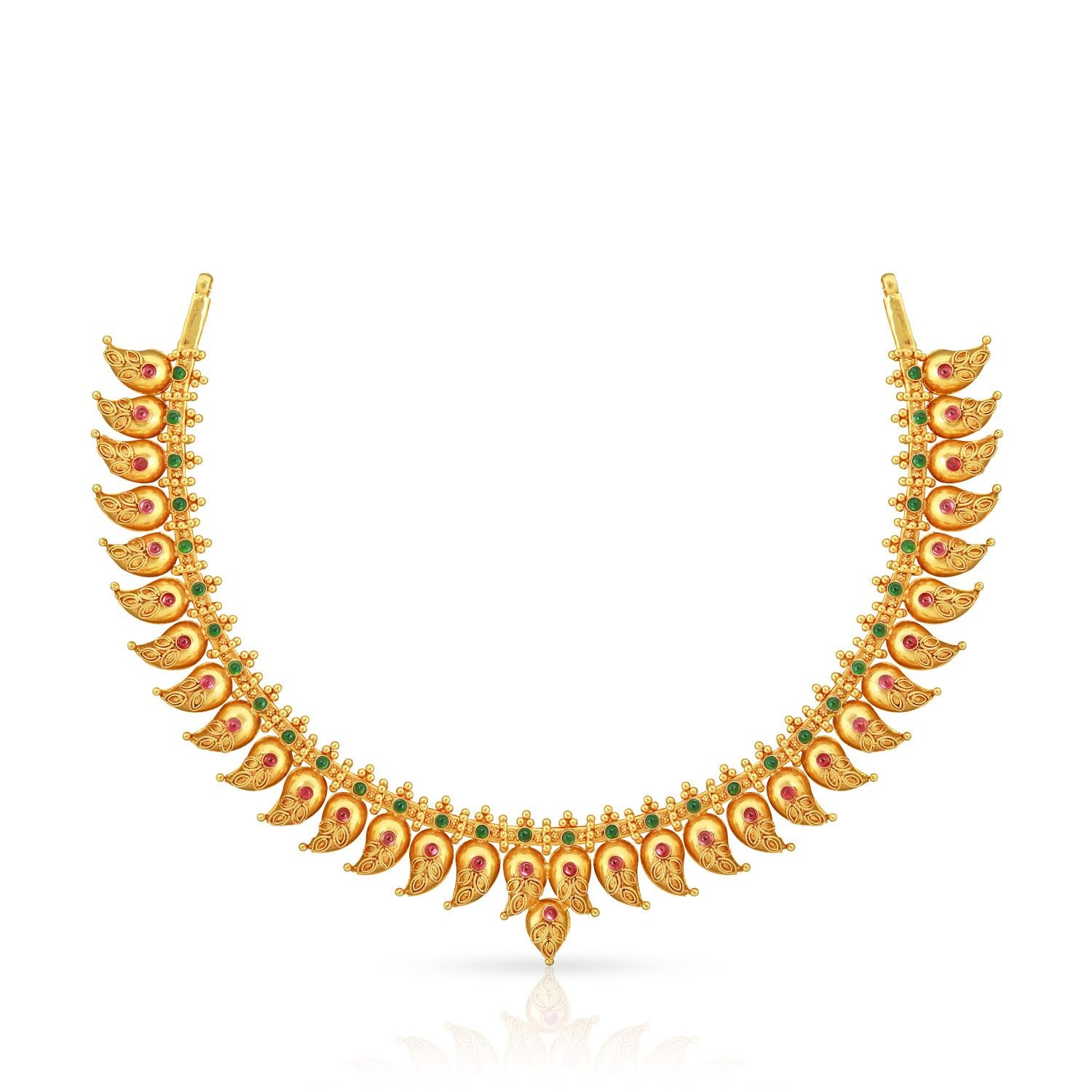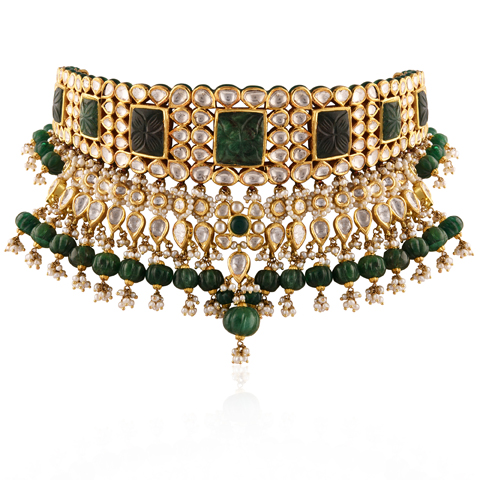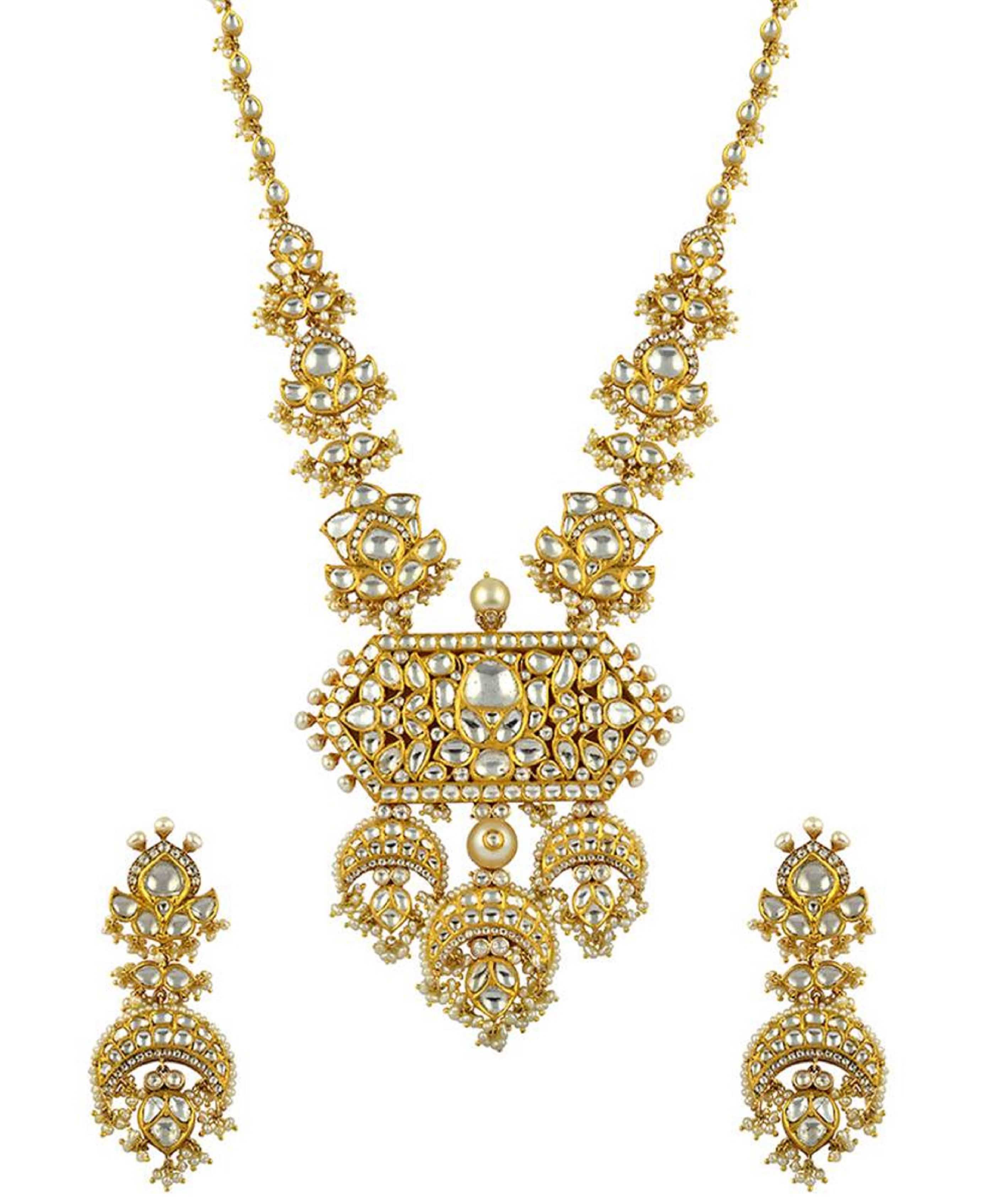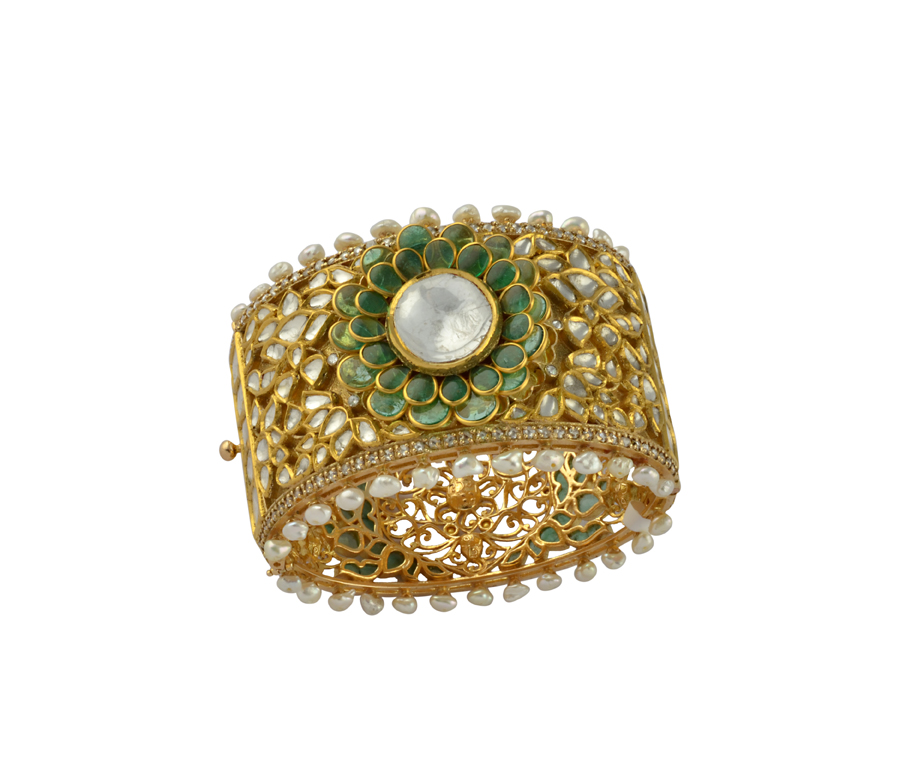Statement Pieces From Indian States
Ditching the old-school and bending the rules to adorn what they ‘consider’ fashion; the new age bride does not hesitate to experiment with her choices. She takes pride in her ethnicity and celebrates her roots adorning these statement pieces as a part of the ceremonial look, en-route her wedding. This edition, we pay tribute to the iconic bijouterie from various Indian territories.
What does Sharmila Tagore, Preity Zinta, and Nargis Fakhri have in common? All have played a pretty Kashmiri damsel in at least one of their films. Similar is the case with Vidya Balan, Rani Mukherjee and Madhuri Dixit, who have adorned the regional jewellery for a Marathi mulgi look. And it would be a complete injustice if we deny not falling for the regional ornaments and ending up buying a pair or two when we visit these places to complement the cultural-vibe. As the Hindi idiom goes — Jaisa Des Vaisa Bhes, these iconic jewellery pieces are synonymous to the region’s identity.
Kashmir
Ye chaa nd sa roshan chehra, zulfon ka rang sunehra.. Ye jheel si neeli aankhein, koi raaz hai inmein gehra.Taareef karun ka uski…
The maiden thought that engulfs your mind when these lyrics fall on your ears is a carefree Shammi
Kapoor doing his signature steps on a boat and the next, sureshot is a blushing Sharmila Tagore wearing
her Kashmiri headgear and silver ornaments hanging on either side of the face. This silver headgear or a crown is peculiar to the women of Rajouri district of Kashmir known as Chaunk Phool. Let’s look at some
other jewellery pieces from this breathtakingly gorgeous territory.
Dejhoor: Dejhoor is a hexagonal dangler earring that hangs on a silk thread/gold chain, that passes through holes in the ears pierced and at the top end of the ear-lobes. It symbolises the marital status of Kashmiri Pandit women.
Atta Hor: It is another ear ornament and hangs over the ears on either side of the head, connected by a golden chain running over the head of a married Kashmiri Pandit woman.
Maharashtra
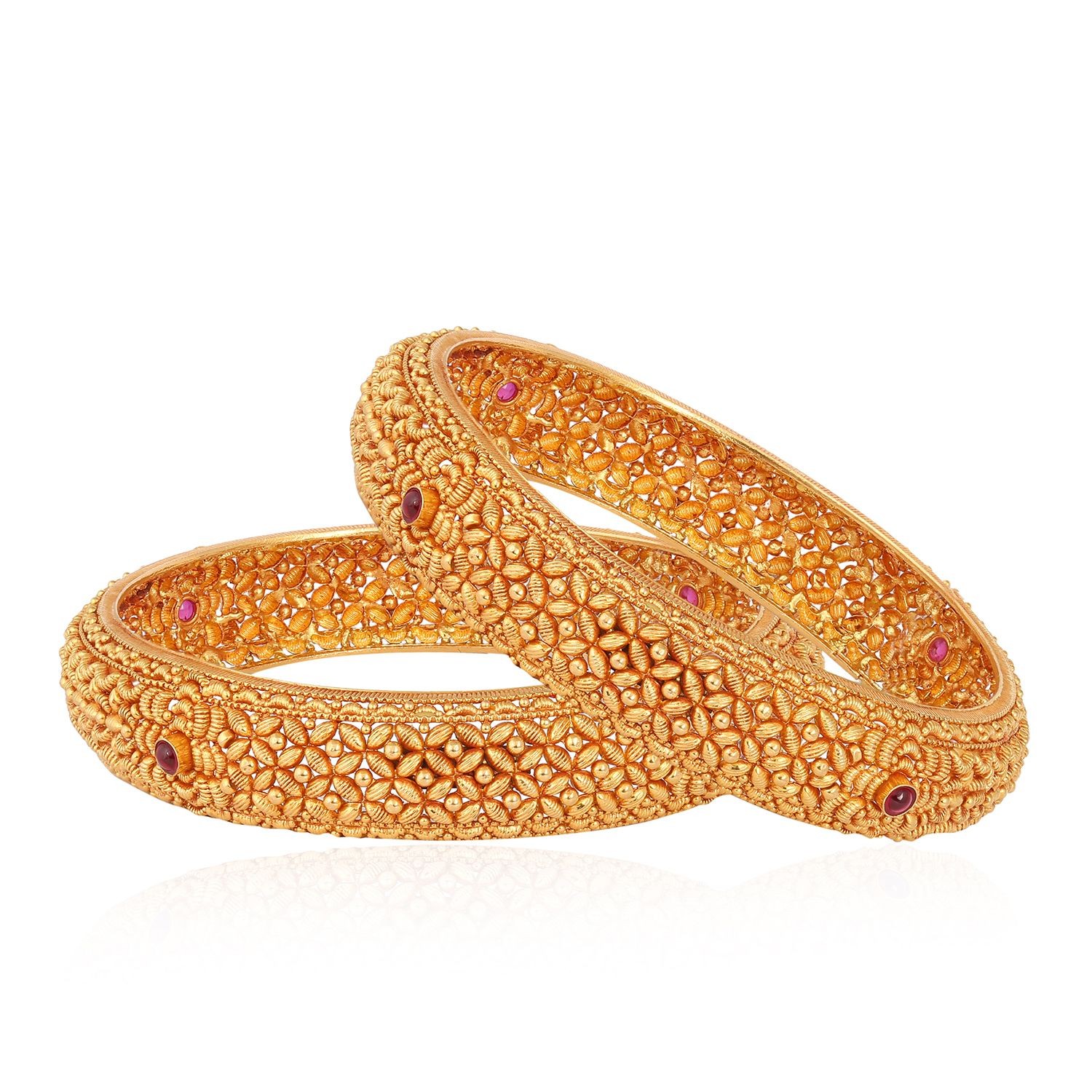
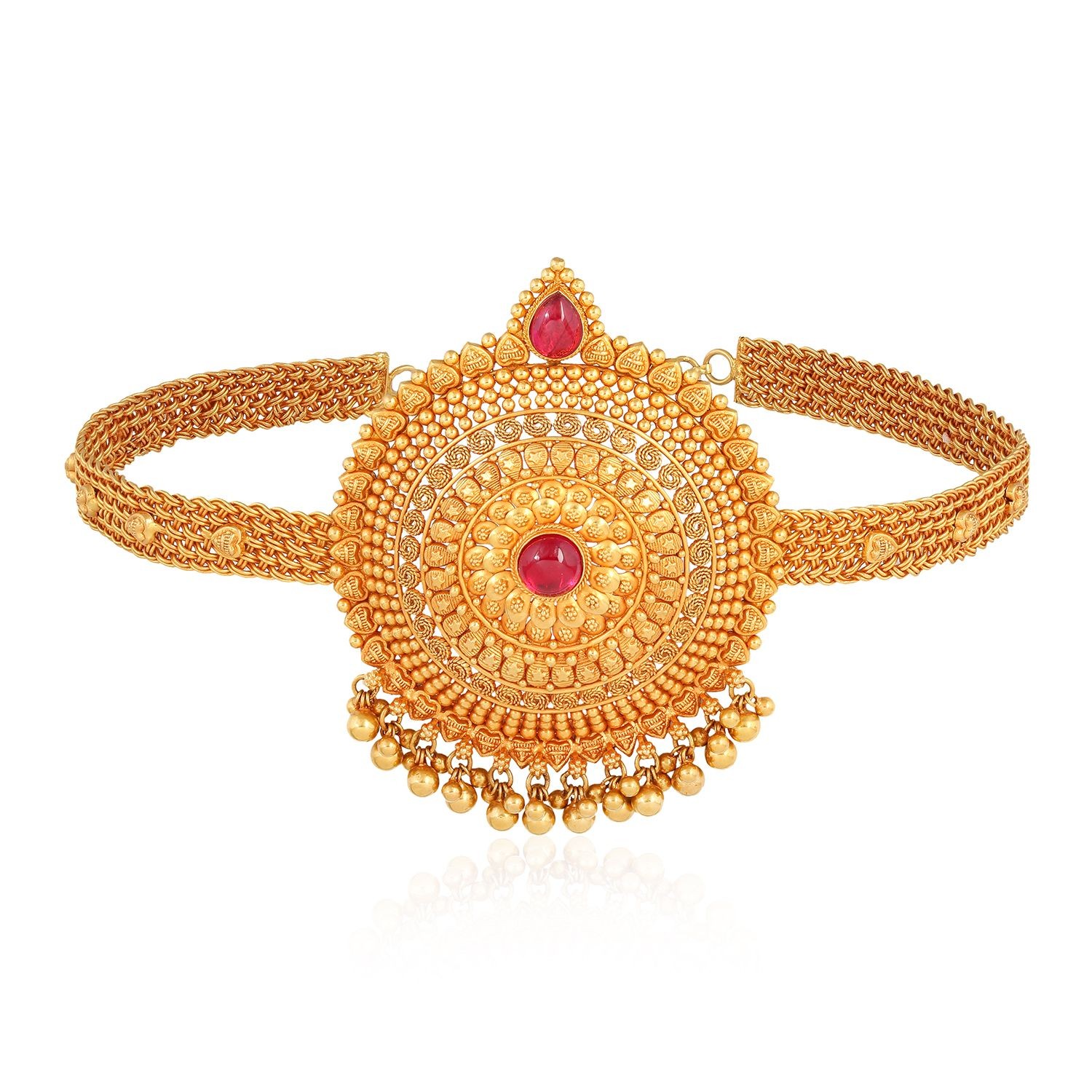
Known as a land of Marathas, the traditional clothing, culture and jewellery are all inspired by the great warriors who have fearlessly ruled the region in the past. – Swagat Aahe to the homeland of Bollywood, Tamasha, Lavni and Peshwa-inspired adornments.
Mundavalya: To make it easier to recall, think of Priyanka Chopra’s wedding look in the movie ‘Agneepath’ or ‘Kaminey’. It is the multiple strings of pearls/ gold tied horizontally to the head, and hangs down in two strings from either side of the face of bride and groom, at the time of the wedding. This is worn to signify that the girl is ready to marry and usually tied just before the bride approaches the mandap
for her nuptials.
Brahmini Nath: A clove-shaped nose ornament adorned by Maharashtrian women at weddings, religious ceremonies and other important ocassions. Inspired by the Peshwa rule, nath is crafted in 22-carat gold and has pearls, rubies, and emeralds attached to it to lend a colourful appeal. An interesting trend sees girls increasingly uniting the traditional nath with their western attires.
Thushi: A gold choker worn as a part of bridal jewellery in Maharashtra, thushi originated in Kolhapur. Crafted in gold beads it comes with an adjustable dori (thread to tie the necklace around the neck). The gold beads represents jowar (sorghum) seeds synonymous to the agrarian culture of the state implying, the bride’s new home will always be blessed with food.
Vaki: It is an armlet or baajuband made of interlocked gold chains and is adorned with ruby studded at the centre. It is done, because the red colour of this jewel is considered auspicious for Hindu brides.
Tode: A Marathi bride wears at least one pair of tode bangle on her wrists. These bangles are thick gold bands that can be engraved with patterns and motifs. The design on these bangles is so intricate that it might take over a month to make them, though earlier Maharashtrian bangles tend to be simpler in design.
Rajasthan
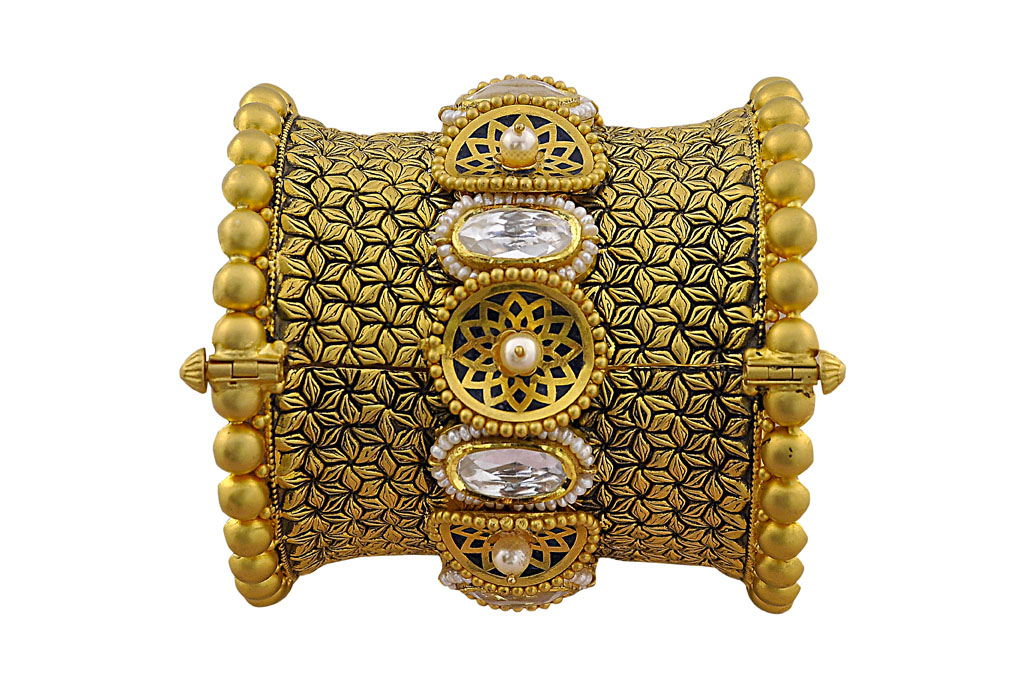
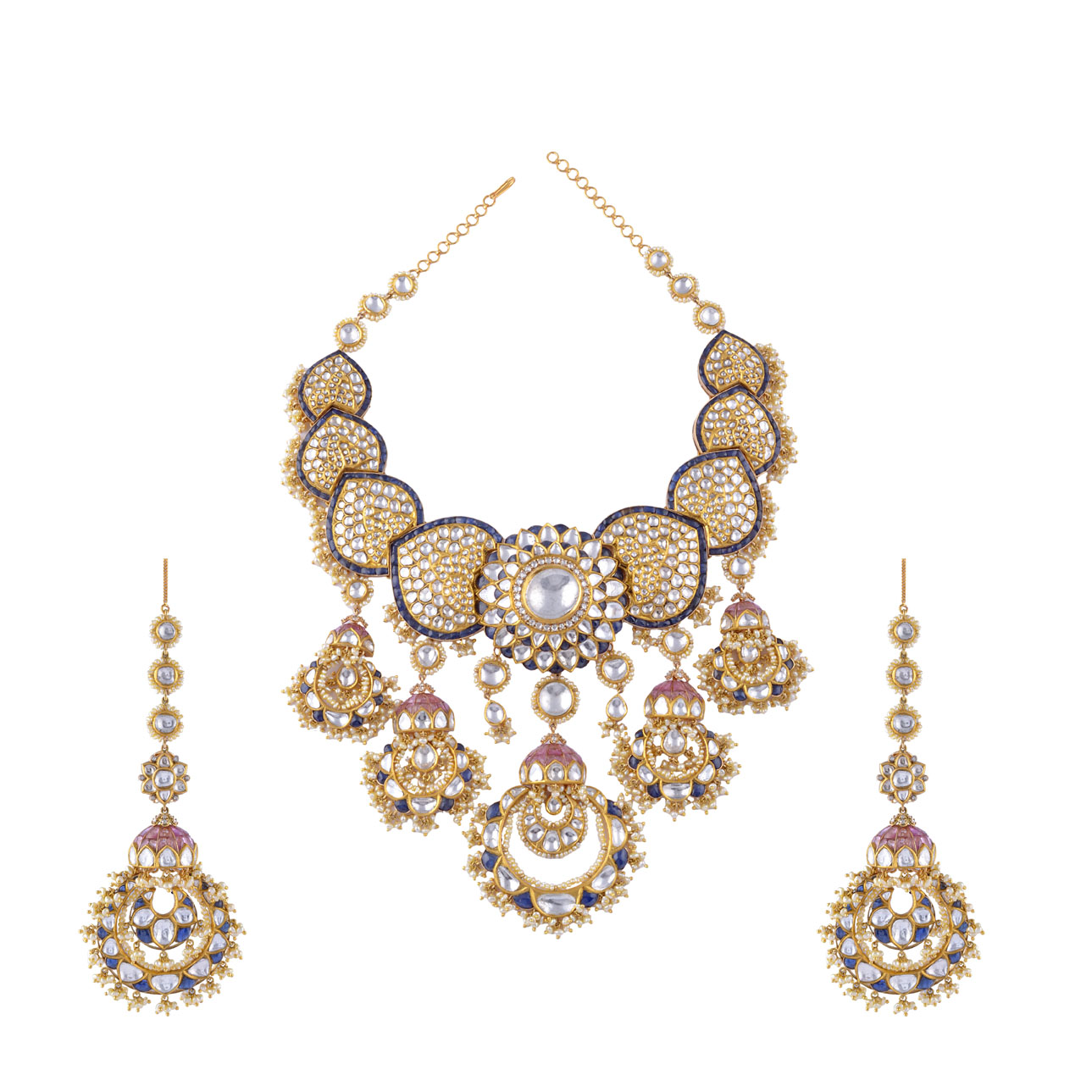
Khambagani! With its invincible forts, huge palaces, and glorious Rajputana history; Rajasthan basks in the glory of rich heritage and kingdom. The arid land of sand dunes, thorny shrubs, camels, lac is the home to artisans that have mastered the craft of intricate jewellery designing. One doesn’t have to Google
search for the jewellery peculiar to the state, as the vision of the gorgeous Deepika Padukone as queen Padmavati and Aishwarya Rai Bachchan as queen Jodha, is still fresh in our minds. Let’s have a look at the jewellery unique to this place – Padharo ni mhaare des..
Rakhdi/ Borla: Rakhdi/ Borla is the traditional maang tikka that runs across the hair partition. Owing to
its spherical or bell shape, rakhdi is different from the usual maang tikka. It has a spherical pendant hanging at the top of the forehead and comes in various sizes.
Sheeshphool: Sheeshphool is the chain on the two sides, meant to support the rakhdi or borla. This chain is detachable from borla. The rakhdi and sheeshphool together forms a matha patti, worn by the brides of Rajasthan.
Nathni: Adorned by Rajasthani women at festive occasions, a nathni or nath is usually worn on the left nostril, attached to the ear for support using a gold or pearl chain. A large golden nathni embellished with kundan looks very regal to the onlookers and is perhaps one of the most distinctive ornaments of the Thar region.
Kaanbaali: Also known as Jhaale, it is the big earrings immaculately designed with kundan or meenakari work for a sweet traditional look.
Aadh: A spectacular collar-neckpiece, it is the traditional Rajputana necklace gifted to the bride by the family of the groom. One of the must have assets for the bride, aadh is usually crafted in kundan or polki. To add oodles of charm to the look, a necklace called Rani Haar is also worn by a Rajasthani bride that can extend to the navel.
Haathphool: A form of bracelet, haathphool extends from the wrists to the rings on fingers through chains.
Also known as haath kamal, it makes all hand movements of the bride look mesmerising.
Bajuband: This filigreeornament is an upper armlet. It is worn by the Marwari and Rajput brides.
Tagdi: A belly-chain also known as Kardhani is worn by Rajasthani brides, made of gold or silver with kundan or polki work, to grace the saree on all special occasions of life.
Last but not the least is the state whose simplistic flavours, favourite of many, speaks of its excellent craftsmanship. Bright yellow in colour, the gold in this region runs high on auspice ladder, so much that the women here abstain from wearing it on their feet — as Gods are the only entities who can adorn the yellow metal on feet. Taking inspiration from the elegant leading ladies from the movies – ‘Chennai Express’ and ‘2 States’; Vankakkam — let’s explore the regional temple bijouterie from down south.
Maanga Malai: A long chain with ambi (paisley) design studded with stones and gems.
Valayal/ Sarivu: Valayal bangles are made up of plain gold or studded with stones or gems to grace the wrists.
Vankey: An armband, the Tamilian vankey comes from a single inverted letter ‘V’ forming a cobra-head
symbolising ananta-shesha, the serpent which Lord Vishnu is believed resting on.
Oddiyanam: The heavy gold waist-belt, essential for Tamil bride depicts goddess Lakshmi who is known for her celestial beauty. At times, Lord Ganesha is seen with Karthikeya to invoke blessings of divine offsprings for the bride.
Jadanagam: A unique ruby or diamond studded ornament, that trails down the braid of the Tamil bride to enhance her thick mane.
Jimikki: Jimikki is the Tamilian name for jhumka – a kind of dangler earring that looks extremely appealing on a woman. It is admirable to witness how people are influenced by jewellery designs of regions other than their own states, and adorn them at times to define their personality. Lending a distinctive look to the wearer, these ornaments be speaks the identity and heritage of the region and individual’s roots – A must have for the classical-contemporary women.
Ditching the old-school and bending the rules to adorn what they ‘consider’ fashion; the new age bride does not hesitate to experiment with her choices. She takes pride in her ethnicity and celebrates her roots adorning these statement pieces as a part of the ceremonial look, en-route her wedding. This edition, we pay tribute to the iconic bijouterie from various Indian territories.
What does Sharmila Tagore, Preity Zinta, and Nargis Fakhri have in common? All have played a pretty Kashmiri damsel in at least one of their films. Similar is the case with Vidya Balan, Rani Mukherjee and Madhuri Dixit, who have adorned the regional jewellery for a Marathi mulgi look. And it would be a complete injustice if we deny not falling for the regional ornaments and ending up buying a pair or two when we visit these places to complement the cultural-vibe. As the Hindi idiom goes — Jaisa Des Vaisa Bhes, these iconic jewellery pieces are synonymous to the region’s identity.
Kashmir
Ye chaand sa roshan chehra, zulfon ka rang sunehra.. Ye jheel si neeli aankhein, koi raaz hai inmein gehra.Taareef karun ka uski…
The maiden thought that engulfs your mind when these lyrics fall on your ears is a carefree Shammi
Kapoor doing his signature steps on a boat and the next, sureshot is a blushing Sharmila Tagore wearing her Kashmiri headgear and silver ornaments hanging on either side of the face. This silver headgear or a crown is peculiar to the women of Rajouri district of Kashmir known as Chaunk Phool. Let’s look at some other jewellery pieces from this breathtakingly gorgeous territory.
Dejhoor: Dejhoor is a hexagonal dangler earring that hangs on a silk thread/gold chain, that passes through holes in the ears pierced and at the top end of the ear-lobes. It symbolises the marital status of Kashmiri Pandit women.
Atta Hor: It is another ear ornament and hangs over the ears on either side of the head, connected by a golden chain running over the head of a married Kashmiri Pandit woman.
Maharashtra
Known as a land of Marathas, the traditional clothing, culture and jewellery are all inspired by the great warriors who have fearlessly ruled the region in the past. – Swagat Aahe to the homeland of Bollywood, Tamasha, Lavni and Peshwa-inspired adornments.
Mundavalya: To make it easier to recall, think of Priyanka Chopra’s wedding look in the movie ‘Agneepath’ or ‘Kaminey’. It is the multiple strings of pearls/ gold tied horizontally to the head, and hangs down in two strings from either side of the face of bride and groom, at the time of the wedding. This is worn to signify that the girl is ready to marry and usually tied just before the bride approaches the mandap for her nuptials.
Brahmini Nath: A clove-shaped nose ornament adorned by Maharashtrian women at weddings, religious ceremonies and other important ocassions. Inspired by the Peshwa rule, nath is crafted in 22-carat gold and has pearls, rubies, and emeralds attached to it to lend a colourful appeal. An interesting trend sees girls increasingly uniting the traditional nath with their western attires.
Thushi: A gold choker worn as a part of bridal jewellery in Maharashtra, thushi originated in Kolhapur. Crafted in gold beads it comes with an adjustable dori (thread to tie the necklace around the neck). The gold beads represents jowar (sorghum) seeds synonymous to the agrarian culture of the state implying, the bride’s new home will always be blessed with food.
Vaki: It is an armlet or baajuband made of interlocked gold chains and is adorned with ruby studded at the centre. It is done, because the red colour of this jewel is considered auspicious for Hindu brides.
Tode: A Marathi bride wears at least one pair of tode bangle on her wrists. These bangles are thick gold bands that can be engraved with patterns and motifs. The design on these bangles is so intricate that it might take over a month to make them, though earlier Maharashtrian bangles tend to be simpler in design.
Rajasthan
Khambagani! With its invincible forts, huge palaces, and glorious Rajputana history; Rajasthan basks in the glory of rich heritage and kingdom. The arid land of sand dunes, thorny shrubs, camels, lac is the home to artisans that have mastered the craft of intricate jewellery designing. One doesn’t have to Google search for the jewellery peculiar to the state, as the vision of the gorgeous Deepika Padukone as queen Padmavati and Aishwarya Rai Bachchan as queen Jodha, is still fresh in our minds. Let’s have a look at the jewellery unique to this place – Padharo ni mhaare des..
Rakhdi/ Borla: Rakhdi/ Borla is the traditional maang tikka that runs across the hair partition. Owing to
its spherical or bell shape, rakhdi is different from the usual maang tikka. It has a spherical pendant hanging at the top of the forehead and comes in various sizes.
Sheeshphool: Sheeshphool is the chain on the two sides, meant to support the rakhdi or borla. This chain is detachable from borla. The rakhdi and sheeshphool together forms a matha patti, worn by the brides of Rajasthan.
Nathni: Adorned by Rajasthani women at festive occasions, a nathni or nath is usually worn on the left nostril, attached to the ear for support using a gold or pearl chain. A large golden nathni embellished with kundan looks very regal to the onlookers and is perhaps one of the most distinctive ornaments of the Thar region.
Kaanbaali: Also known as Jhaale, it is the big earrings immaculately designed with kundan or meenakari work for a sweet traditional look.
Aadh: A spectacular collar-neckpiece, it is the traditional Rajputana necklace gifted to the bride by the family of the groom. One of the must have assets for the bride, aadh is usually crafted in kundan or polki. To add oodles of charm to the look, a necklace called Rani Haar is also worn by a Rajasthani bride that can extend to the navel.
Haathphool: A form of bracelet, haathphool extends from the wrists to the rings on fingers through chains.
Also known as haath kamal, it makes all hand movements of the bride look mesmerising.
Bajuband: This filigreeornament is an upper armlet. It is worn by the Marwari and Rajput brides.
Tagdi: A belly-chain also known as Kardhani is worn by Rajasthani brides, made of gold or silver with kundan or polki work, to grace the saree on all special occasions of life.
Tamil Nadu
